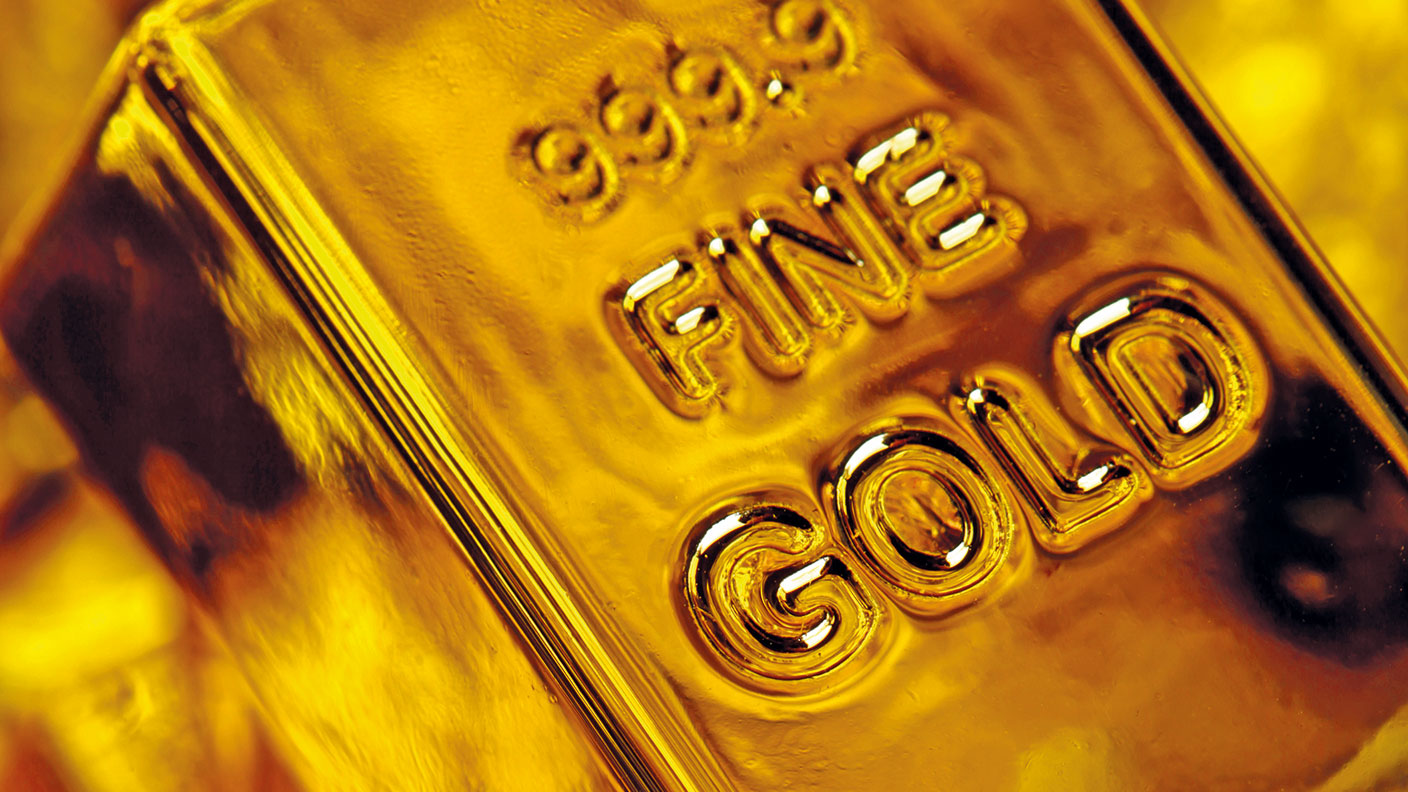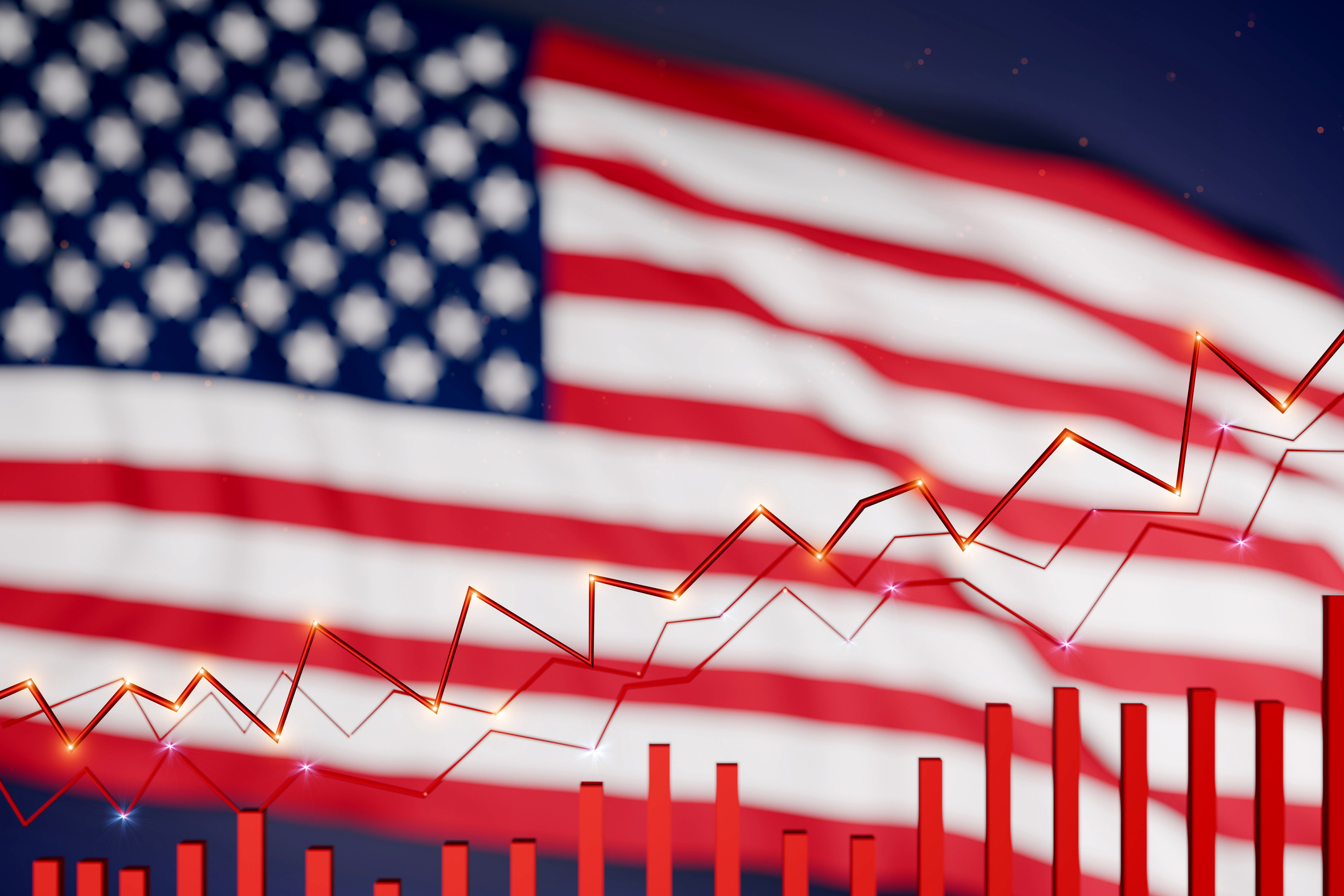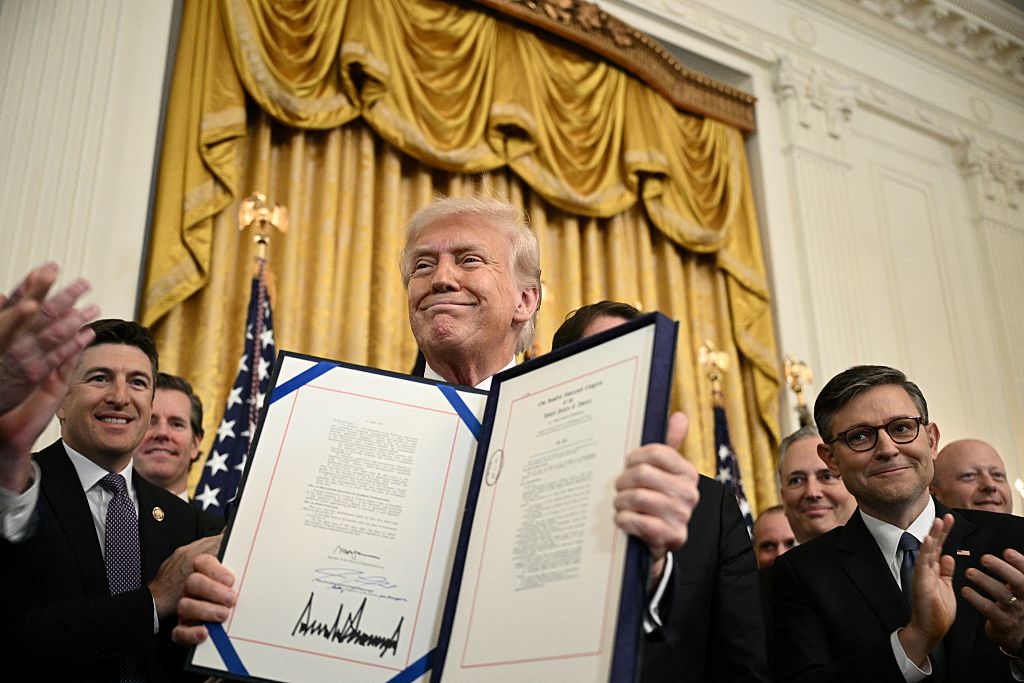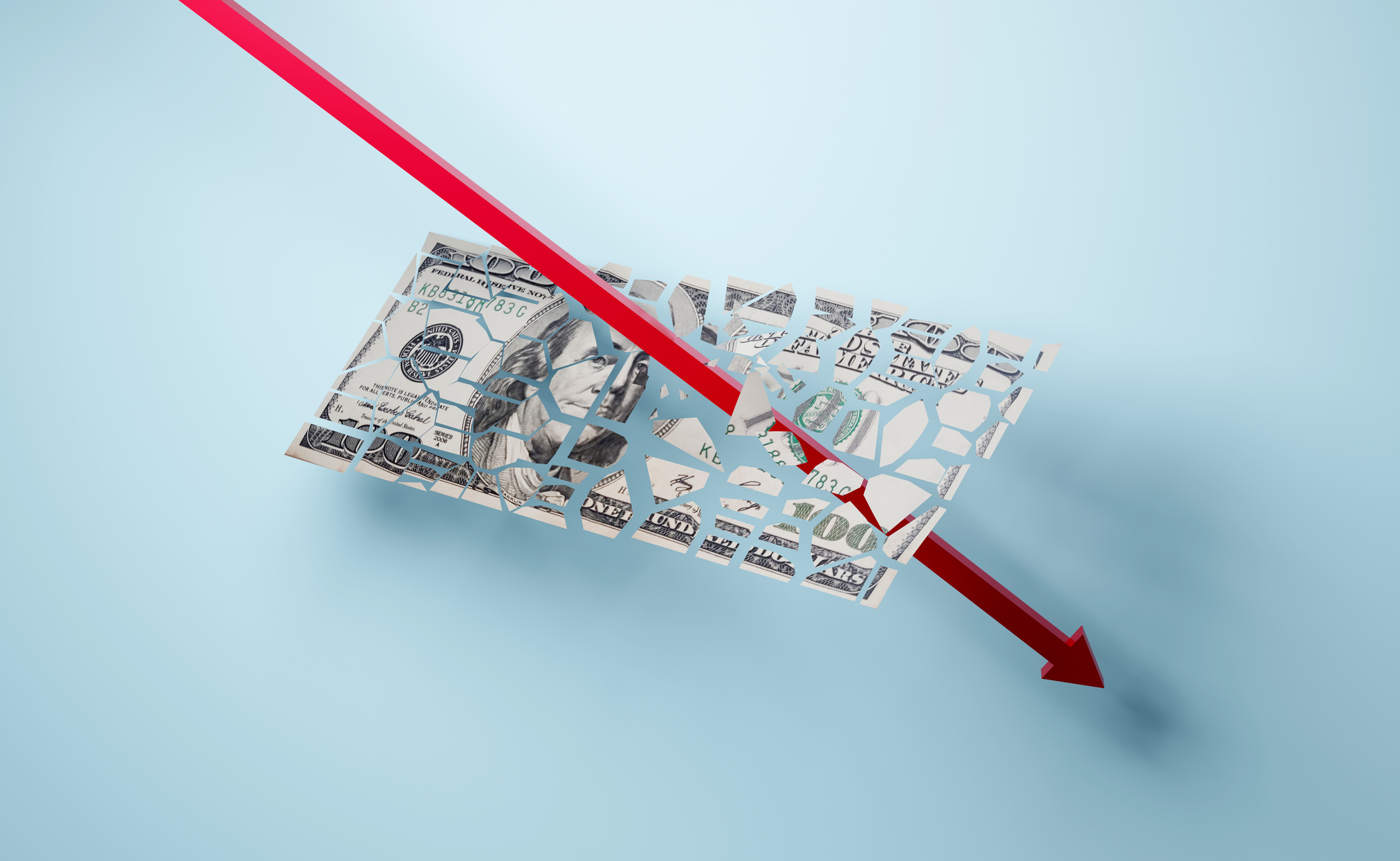The going looks good for gold
With inflation fears rising and interest rates nailed to the floor, the outlook for gold is bright, says John Stepek.


Is gold set to hit fresh records? Citigroup’s analysts this week said “it is only a matter of time” before the yellow metal surpasses its 2011 dollar high of just over $1,920 an ounce. The investment bank also reckons there’s a 30% chance that gold will go above the $2,000 mark within the next five months. Yet gold is already at, or near, all-time highs in almost any currency you care to mention. Given all this, you might be wondering (particularly as a sterling investor): can gold really go much higher from here?
To answer that, we need to look at what drives the gold price. Many investors think that gold is an inflation hedge, but that’s not the whole story. What really drives gold is movements in “real” interest rates (ie, interest rates after inflation – defined in more detail below). In short, falling real rates are good news for gold. Gold carries no credit risk (a gold bar can’t go bankrupt); it has a long-term history of retaining its value through a range of economic backdrops; and when the yield on other assets is falling, or even negative, the 0% yield on gold doesn’t seem so bad. So today’s environment of growing concern about inflation, plus near-0%, or even negative, nominal interest rates, looks good for gold.
But will real rates keep falling?
Governments are taking on a great deal of debt to contend with the impact of the coronavirus lockdown. While some expect central banks to raise rates if inflation appears (see page 20), this seems a stretch. Even a small increase in rates would render this debt unpayable. The reality is that governments need rates to remain below inflation in order to erode away its value. Indeed, as Tim Duy notes on Bloomberg, the US central bank, the Federal Reserve, may be on the verge of officially taking a more relaxed approach to its 2% inflation target. This is called “financial repression” and it’s by no means a new tool. So assuming that inflation does rise – which again seems likely given the sheer scale of public spending – then real interest rates may well continue to fall.
MoneyWeek
Subscribe to MoneyWeek today and get your first six magazine issues absolutely FREE

Sign up to Money Morning
Don't miss the latest investment and personal finances news, market analysis, plus money-saving tips with our free twice-daily newsletter
Don't miss the latest investment and personal finances news, market analysis, plus money-saving tips with our free twice-daily newsletter
Markets don’t move in straight lines and all the fresh attention paid to precious metals (this week’s surge in silver has been particularly eye-catching) may indicate a short-term top. But the backdrop remains promising. You can buy physical gold from a bullion dealer, or get exposure using one of the many exchange-traded funds (ETFs) available, such as Royal Mint Physical Gold (LSE: RMAU). If you’d like to bet on silver – which tends to outperform once a gold bull market gets going – then consider a silver ETF such as WisdomTree Physical Silver (LSE: PHAG), but bear in mind that silver is far more volatile.
I wish I knew what a real interest rate was, but I’m too embarrassed to ask
A “real” interest rate is simply an interest rate that has been adjusted to take inflation into account. (A “nominal” interest rate is one that has not been adjusted for inflation). This matters because inflation reduces the value of any future stream of income.
Take a bank account into which you plan to place £1,000. If inflation is running at 1% then a 2% nominal interest rate looks quite respectable – your savings will have more purchasing power a year from now. However, if inflation is running at 3%, your savings will have less purchasing power when you withdraw them in a year’s time, even though the £1,000 will have grown (in nominal terms) to £1,020. Of course, the advertised rate will be the nominal one, not the real one.
The real interest rate is given by the Fisher equation (named after US economist Irving Fisher, who refined the calculation). However, while this gives a more precise answer, for most purposes it’s much easier to simply subtract the inflation rate (which can either be current or expected) from the nominal interest rate. So in the first example above, the real interest rate is 1% (you are earning a “real” return of 1% a year), whereas in the second example it’s minus 1% (you are losing money in real terms).
One way to get an idea of market expectations for inflation is to compare yields on index-linked government bonds (which enjoy inflation protection) to normal government bonds. In the US, for example, taking the difference between the yield on Treasury Inflation-Protected Securities (Tips) and the yield on standard Treasuries of a similar maturity gives the “break-even” rate – the level of inflation that means an ordinary Treasury will return the same as an index-linked one. Using this measure, notes Sam Goldfarb in The Wall Street Journal, inflation expectations have risen sharply since May, even as yields on both Treasuries and Tips have fallen, implying that rates will remain low.
Get the latest financial news, insights and expert analysis from our award-winning MoneyWeek team, to help you understand what really matters when it comes to your finances.
John Stepek is a senior reporter at Bloomberg News and a former editor of MoneyWeek magazine. He graduated from Strathclyde University with a degree in psychology in 1996 and has always been fascinated by the gap between the way the market works in theory and the way it works in practice, and by how our deep-rooted instincts work against our best interests as investors.
He started out in journalism by writing articles about the specific business challenges facing family firms. In 2003, he took a job on the finance desk of Teletext, where he spent two years covering the markets and breaking financial news.
His work has been published in Families in Business, Shares magazine, Spear's Magazine, The Sunday Times, and The Spectator among others. He has also appeared as an expert commentator on BBC Radio 4's Today programme, BBC Radio Scotland, Newsnight, Daily Politics and Bloomberg. His first book, on contrarian investing, The Sceptical Investor, was released in March 2019. You can follow John on Twitter at @john_stepek.
-
 ‘Why I have ditched my Help to Buy ISA for cash savings and the stock market’
‘Why I have ditched my Help to Buy ISA for cash savings and the stock market’Without the 25% bonus, my Help to Buy ISA is effectively redundant, says MoneyWeek writer Sam Walker.
-
 Is your inheritance tax allowance cut if you sell to downsize or sell your home to pay for care?
Is your inheritance tax allowance cut if you sell to downsize or sell your home to pay for care?Downsizing relief is a little-known benefit that could save your loved ones tens of thousands of pounds in inheritance tax after you’ve died.
-
 Stock markets have a mountain to climb: opt for resilience, growth and value
Stock markets have a mountain to climb: opt for resilience, growth and valueOpinion Julian Wheeler, partner and US equity specialist, Shard Capital, highlights three US stocks where he would put his money
-
 The steady rise of stablecoins
The steady rise of stablecoinsInnovations in cryptocurrency have created stablecoins, a new form of money. Trump is an enthusiastic supporter, but its benefits are not yet clear
-
 SRT Marine Systems: A leader in marine technology
SRT Marine Systems: A leader in marine technologySRT Marine Systems is thriving and has a bulging order book, says Dr Michael Tubbs
-
 Goodwin: A superlative British manufacturer to buy now
Goodwin: A superlative British manufacturer to buy nowVeteran engineering group Goodwin has created a new profit engine. But following its tremendous run, can investors still afford the shares?
-
 A change in leadership: Is US stock market exceptionalism over?
A change in leadership: Is US stock market exceptionalism over?US stocks trailed the rest of the world in 2025. Is this a sign that a long-overdue shift is underway?
-
 A reckoning is coming for unnecessary investment trusts
A reckoning is coming for unnecessary investment trustsInvestment trusts that don’t use their structural advantages will find it increasingly hard to survive, says Rupert Hargreaves
-
 Metals and AI power emerging markets
Metals and AI power emerging marketsThis year’s big emerging market winners have tended to offer exposure to one of 2025’s two winning trends – AI-focused tech and the global metals rally
-
 8 of the best houses for sale with beautiful fireplaces
8 of the best houses for sale with beautiful fireplacesThe best houses for sale with beautiful fireplaces – from a 15th-century cottage in Kent to a 17th-century palazzo in Oxfordshire
